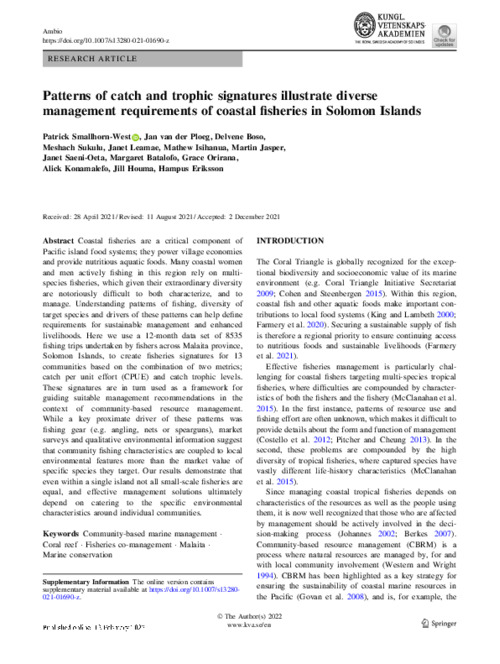Patterns of catch and trophic signatures illustrate diverse management requirements of coastal fisheries at island scale in Solomon Islands

Coastal fisheries are a critical component of Pacific island food systems; they power village economies and provide nutritious aquatic foods. Many coastal women and men actively fishing in this region rely on multi-species fisheries, which given their extraordinary diversity are notoriously difficult to both characterize, and to manage. Understanding patterns of fishing, diversity of target species and drivers of these patterns can help define requirements for sustainable management and enhanced livelihoods. Here we use a 12-month data set of 8535 fishing trips undertaken by fishers across Malaita province, Solomon Islands, to create fisheries signatures for 13 communities based on the combination of two metrics; catch per unit effort (CPUE) and catch trophic levels. These signatures are in turn used as a framework for guiding suitable management recommendations in the context of community-based resource management. While a key proximate driver of these patterns was fishing gear (e.g. angling, nets or spearguns), market surveys and qualitative environmental information suggest that community fishing characteristics are coupled to local environmental features more than the market value of specific species they target. Our results demonstrate that even within a single island not all small-scale fisheries are equal, and effective management solutions ultimately depend on catering to the specific environmental characteristics around individual communities.
Permalink
Date Available
Type
Publisher
Countries
ISSN
0044-7447,1654-7209
Copyright
CC-BY-4.0
Research Themes
Language